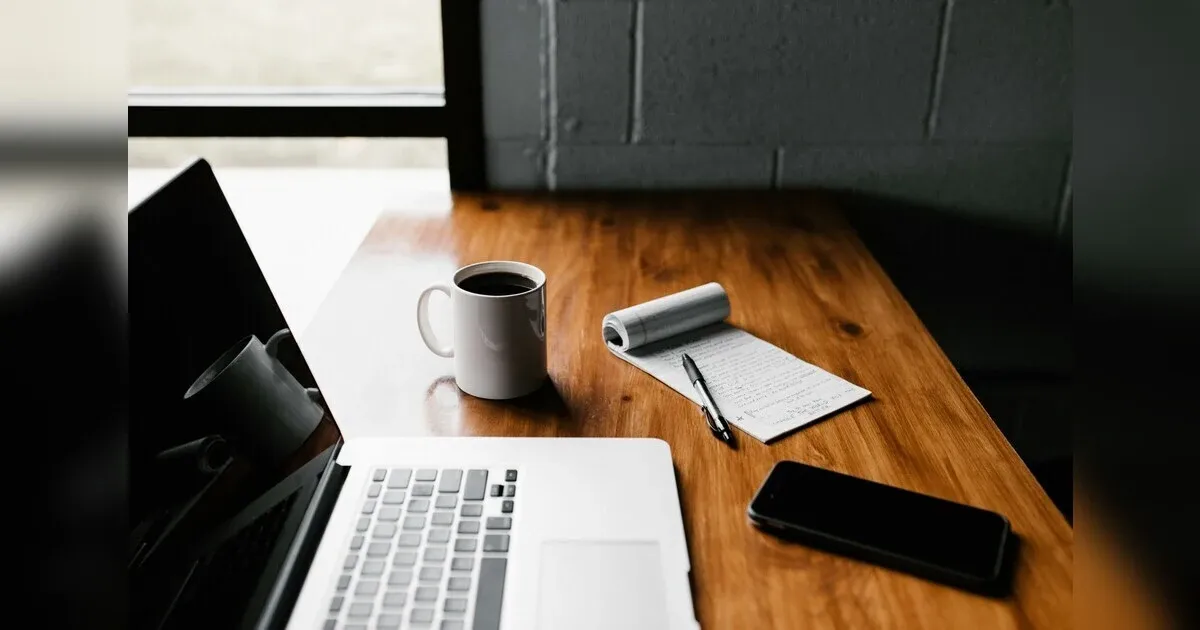Discover how mindfulness techniques can help you manage anxiety and improve focus. From deep breathing to mindful walking, these simple practices empower you to stay present, reduce stress, and find calm. Embrace mindfulness and transform your daily experience with peace and clarity.
Mindfulness Techniques for Anxiety Relief
Introduction
Anxiety is a known disease that poses a significant problem to individuals’ everyday lives, affecting millions of people worldwide. It presents in this and that form, and it encompasses rumination, contemplating, imagining, or thinking at top speed; fast pacing of thoughts; heart beating hard and sweating. The stress is that anxiety can be managed, and one of the ways is through mindfulness. Mindfulness means being conscious of thoughts, feelings, body sensations, environment, and activities, and it currently receives a lot of interest as a stress-reducing technique with the potential to enhance psychological and emotional health.
This article will compare how mindfulness can be used as a way of overcoming anxiety and a technique for enhancing the chosen focus area. Here are the main things you will dig into; The course covers practical methods, including deep breathing, body scan and mindful walking. , they are all aim to assist you in staying in the current moment and minimizing the number of anxious thoughts you have and giving you a sense of peace in the middle of life’s storm. At the end, you should be in a position to understand how mindfulness can be practiced in daily practice and reap the benefits of practicing for the long term. Without further ado, let me take you through the beauty of this simple practice — mindfulness.
Understanding Anxiety and Its Impact
Stress is normal, but when it produces anxiety that does not go away, it affects normal functioning. It may include a chronic condition of anxiety about future situations or occurrences or refraining from enjoying the moment in worry of a future occurrence. Of course, anxiety also affects your physical well-being; you begin to feel exhausted, tense your muscles, and even suffer from sleepless nights.
Practicing mindfulness is an effective way to tackle anxiety, for it ceases your thoughts from going around in circles on what may go wrong to what is going on currently. One, it helps you to watch your thoughts and feelings without necessarily having to be sucked into them. This change can be as simple as a shift in focus and can be hugely powerful in offering people a feeling of calm and order.
What Is Mindfulness?
Mindfulness is really quite simple, it refers to the deliberate act of focusing on the present moment without negativity. It means knowing how you think, feel, and sense in the present moment. The primary goal of mindfulness here is to replace the animalistic reactions to stress with cognition-based responses through awareness.
Modified from meditative practices, mindfulness is an activity that doesn’t necessarily have connections with the religious beliefs of the modern world. It is a very functional utility that is addictive for all sorts of people in order to improve their mental and emotional states.
Mindfulness and Anxiety in the Science of Psychology
It is becoming apparent that mindfulness does have an effect on anxiety, as proven by several studies. It does so by directing attention to the amygdala, often referred to as the body’s fire alarm, because it triggers the fight or flight response. Concurrently, mindfulness enhances the neurons in the prefrontal lobe, which governs the appropriate emotions that control our decision-making.
There are claims that mindfulness practice would help to decrease cortisol concentration, the hormone that is significant for stress response. And this means not only are you the beneficiary of the calmness you experience when using CBD to help you manage stress, but you are also strengthening your body’s coping mechanisms against stress.
Key Mindfulness Techniques for Anxiety Relief
1. Deep Breathing Exercises
Another is that the most effective method that could bring quick relief to anxiety is through taking deep breaths. The effects of shallow and rapid breathing brought about by anxiety are feelings of fainting and faster heart rate. Conversely, deep breathing works the relaxation response of the body, which counteracts this.
Here’s a simple exercise to try:
1. Well, remain seated if you can, and if it is okay with you, just close your eyes.
2. Breathe in through your mouth and hold your nose – count to four.
3. Take a deep breath, and hold your breath for four seconds.
4. Breathe out for six seconds through your mouth.
5. Perform this for a couple more minutes, concentrating only on your breathing.
Besides helping to calm down mentally, deep breathing has another important benefit – it points to the present moment.
2. Body Scan Meditation
The body scan is a variant of the basic act of mindfulness, and during the process, one is required to focus on different parts of the body. This makes you more able to attend to physical experiences as these may be easily missed during an anxious episode.
To practice a body scan:
1. Lie down or sit comfortably. When the patient is like this, let them take some time and count to ten; deep breathing will also be done.
2. The first step of the massage is to work on the toes. Pay attention to temperature changes—warmth, pins and needles, or tension.
3. Sweep your awareness up your legs, your torso, your arms, and finally your head.
4. Take five minutes in each area and just sit quietly and patiently and watch what the children are doing without making any comments.
This exercise helps you pay attention to your body and let go of any stress you might be having.
3. Grounding Techniques
Coping strategies are meant to help you come back to the reality bike, or in other words, mindful exercises. They are a great help when someone suffers from anxiety attacks or has occasional panic attacks.
One effective grounding method is the 5-4-3-2-1 technique:
• 5: Look around and name five objects you can identify.
• 4: Look four things that have a tangible feel.
• 3: Describe three sounds.
• 2: Take one thing you can touch in lesson one and one thing you can smell in lesson two.
• 1: Actually, focus on one thing, which is touching your taste buds. Notice one thing you can taste An example of a sensory detail would be notice one thing you can taste.
This exercise effectively diverts your attention from the negatives and brings it to the situation right at the moment.
4. Mindful Walking
When it is not possible to sit in meditation, or people don’t like to sit still, then mindful walking could be very useful. This was the practice of focusing on what a person is doing while walking: how the feeling of feet, the beat of steps, and the surface of the ground underneath feel.
To practice mindful walking:
1. Try to look up an isolated trail, meadow, or clearing.
2. Take time to walk while paying little attention to your speed and the number of steps you are taking.
3. Pay attention to your legs, to the feeling of your ankles touching the floor, and to your breath.
Mindful walking is good not only for anxiety but also for increasing a connection with the environment around you.
5. Loving-Kindness Meditation
Compassion meditation is a form of meditation where one has to generate feelings of goodwill towards oneself and others. This practice can be especially helpful in decreasing self-criticism, which always comes with anxiety.
Here’s how to practice:
1. Bend your elbows, get into a comfortable position, and take approximately three breaths in and out.
2. Repeat silently or aloud: “May I be happy. May I be healthy? May I be safe. May I be at peace.”
3. Progressively apply these wishes to other people – friends, family members, people you know, people you find it hard to tolerate.
This type of meditation builds a feeling of belonging and eliminates loneliness, which is a key feature of anxiety.
Tips for Incorporating Mindfulness into Daily Life
Isn’t it great that the practice of mindfulness does not involve lengthy, seated meditation and equipment purchases? Here’s how to make it a part of your daily routine:
• Start Small: Start with 5 to 10 minutes of practice a day, then work your way up to practice for an increased amount of time.
• Set Reminders: Take a break and use alarms or sticky notes to remind oneself to practice mindfulness.
• Combine with Daily Activities: Make mundane activities such as brushing one’s teeth or washing dishes, driving as honing in on mindfulness exercises.
• Use Technology: Headspace is one of the most popular apps, along with the Calm app and the Insight Timer.
• Be Patient: Mindfulness, like any other skill, requires practice to master; that’s why it is a way of life. Hooray for the small wins and do not be too dismayed by the lack of them.
Common Challenges and How to Overcome Them
The first step to practicing mindfulness is often very demanding if one’s mind is usually preoccupied. Here are some common obstacles and tips for overcoming them:
• Restlessness: You shouldn’t worry or feel strange when you find yourself wiggling in your sitting or shifting in chairs during mindfulness exercises. Perhaps one has to shorten the practice time or seek a more energetic type of mindfulness, such as walking.
• Wandering Mind: If your mind wanders simply take it back to focus on the breath or something else in the present. So, the purpose is to stop thinking and to learn how to let go of any thoughts that come to your mind without reacting or judging to them.
• Lack of Time: As with most things in life, it doesn’t take much to make an initial amount of difference – even five minutes of mindfulness can help. Try to be mindful when the day allows you to take a break while waiting for a turn, for example.
The Long-Term Effects of Mindfulness
Mindfulness practice, when performed on a regular basis, brings about uncountable benefits other than that against anxiety. These include:
• Improved Focus: Often, mindfulness helps to focus and stick to the task at hand.
• Better Emotional Regulation: You can also effectively manage your emotions because you get to think and not act on them.
• Enhanced Well-being: Mindfulness leads to an increase in levels of happiness and, thus, better life satisfaction.
• Physical Health Benefits: They also enhance direction and focus, reduce blood pressure, help to sleep better, and have a positive effect on people’s immune systems.
Strategies on how Mindfulness works plus Real-Life Success Stories
Lots of individuals have learned that mindfulness helps to decrease anxiety. For instance, Sarah, a 35-year-old, suffered from chronic anxiety that lasted for years. She learned mindfulness, and then, for the first time in a long time, her symptoms started to decrease. “Mindfulness has let me take my thoughts back from my anxiety,” she says. “These words that you participants have written reflect very favorable feelings: happy, less stressed, okay, refreshed, more on top of things, more at the moment.”
John, a college student, also mentioned that mindfulness has helped him face examination stress. “If I get nervous, I calm down and tell myself to stay on the track and concentrate on such things that I am capable of controlling,” as he says.
Conclusion
It is a basic strategy that the person can use in order to control anxiety and increase attention. You can practice mindfulness exercises such as deep breathing, body scan meditation, and mindful walking, thereby helping your mind be present during your day-to-day activities. These techniques not only defuse the anxiety during the test but also prevent a predisposition to stress.
When moving through the process of mindfulness, do not worry about being perfect and have fun with the process. Mindfulness offers much more than mere anxiety management; it improves your health, enables coping with the stress of everyday life, and even improves your decision-making. Begin today and see how it makes a real difference and how Mindfulness will enhance the quality of your mental well-being while also giving you the peace you desperately need in your life.


























